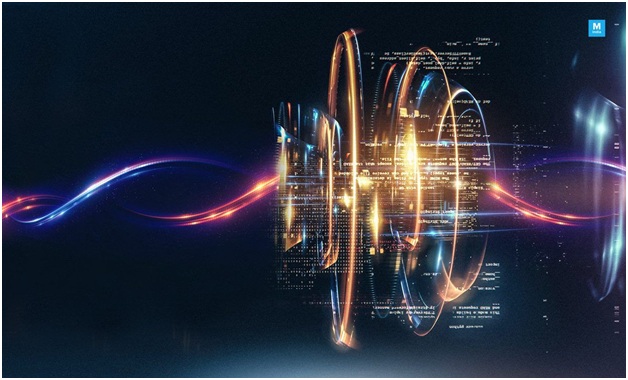Teleportation is the term referring to the safe and secure transfer of information using quantum entanglement over a considerable distance. The sender of the data is present at one location and the receiver at the other, away from the sender. Only quantum information is transferred through quantum teleportation. Quantum teleportation is an essential and significant quantum computation protocol, it is a breakthrough in technology. It is considered to be a revolutionizing technology that will have a significant impact on information transmission in the future. Some applications of this technology can be quantum sensors and quantum computers. With quantum computers, the power of computing can be noticeably increased. On the other hand, quantum sensors also have various applications.
History:
The theory was first proposed in 1993, and since then, there had been continuous efforts in this field to make this theoretical view appear successfully in the practical form. The first know scientific article for the purpose of investigation of quantum teleportation was published in 1993 by W. K. Wootters, C. H. Bennett, R. Josza, A. Peres, G. Brassard, and C. Crepeau. This article was named as “Teleporting an Unknown Quantum State via Dual Classical and Einstein-Podolsky-Rosen Channels.” In this article, they send/receive quantum information using dual communication methods. In 1997, two research groups realized this theory experimentally. Anton Zeilinger and SanduPopescu led these groups. The longest successful teleportation distance was covered by the group led by Jian Wei Pan. It covered a distance of 1400km (870mi). This group used the Micius satellite for quantum teleportation that was space-based.
Progress in the field:
The progress made in this technology until now includes teleportation of quantum qubits and bits. These are the simplest elements of quantum information. In its simplest state, a piece of quantum information can coexist in two forms. According to the recent progress, a qutrit has also been teleported successfully by scientists. It is seen as a breakthrough in quantum teleportation. A qutrit has the ability to coexist in three different states at a time. It is a more complicated unit of quantum information and involves more challenges for scientists due to its complexity. With this progress, more information can be teleported now than before. However, it will also increase the complexity of the process of teleportation. But as with higher risk comes higher return, this process’s effect would be more beneficial and valuable. It may eventually result in possible future technologies such as quantum internet that will aid in secure and instant communications. According to scientists and reports referenced by cheap assignment writing UK that with the increase in a quantum system’s dimensions, the security of the transmission also increases, and more information can be teleported.
Resources required for quantum teleportation:
Following are the essentials required for teleportation within a quantum system.
- A communication channel with the ability to transmit two classical bits.
- A resource to generate entangled qubits in bell state and capable of distribution to two variant locations. It must also be able to perform bell measurement on one qubit in bell state and manipulate the quantum state of the other qubit.
- Input qubit to be teleported. It must be in the quantum state.
- The qubits to be teleported must be in Bell state or entangled quantum state.
Protocol:
With all essentials available, the protocol followed is as follows.
- When both qubits are sent to two different locations, namely A and B, a bell state is generated.
- At location A, the bell measurement is performed for the bell state qubit as well as the qubit, which has to be teleported. The bell measurement may result in four outcomes. Those outcomes can then be encoded into two information bits. The qubits at location A are then discarded.
- The third step is a bit time-consuming. It involves sending two bits from location A to B using the classical channel.
- The bell measurement performed at location A results in qubits at location B is in one of the four closely related outcome states. One of them may be similar to the original quantum state. Out of four outcomes, the actually obtained state’s identity is then encoded in two bits that are then sent to location B.
- In the protocol, as mentioned earlier, it is noticeable that the information is teleported from one carrier to the other. However, the actual carriers are not teleported.
Uses of quantum teleportation:
Along with providing a safe mode of information transmission, quantum teleportation can also enhance the development of quantum technologies. It provides an indispensable foundation for quantum technologies’ development.
Quantum key distribution:
Quantum key distribution is an effective use of quantum teleportation. It refers to the distribution of encryption keys. Intermediary nodes required for message transmission and distance limit methods currently used for quantum key distribution. The entangled state ensures high security at nodes for the global distribution of keys. Quantum critical distribution networks are currently working in the world using a different kind of quantum teleportation that is demonstrated in the labs. In China, the world’s largest quantum critical distribution network has been set up that uses satellites in its operations. In Europe and the US also there are Quantum Key Distribution projects operating on both governmental and commercial levels.
Large-Scale global Super computers:
Quantum entanglement and teleportation may have significant implications in the field of computing. It may be possible that a quantum computer does the initial computation and then passes on intermediary results to another computer using entangled qubits so that the other quantum computer could complete the work. In other words, quantum teleportation can enable quantum computers located at distant locations to work together in a secure and robust network. This way, their efficiency can be increased to a considerable level.
Quantum cryptography:
Quantum cryptography refers to the encryption of messages and data in a firmly secure manner that they are not accessible and readable except for the intended recipient. It integrates quantum mechanics principles to perform the encryption. It can only be performed using a quantum computer that is designed to serve for the encryption and decryption of data.
Quantum computing system:
A Quantum computing system was introduced by IBM named IBM Q. it is a significant step forward in the real-world applications of quantum teleportation. The computing system introduced by IBM is regarded as the first system of industrial grade. It is integrated with commercial quantum systems for science and business applications. Quantum computers are expected to solve multiple problems at a time without compromising on the processing power. This would save time by doing the work of days in hours. However, this feature is not available in the currently available commercial quantum computers in the market.
Limitations of Quantum Teleportation:
Many people might have few unrealistic expectations from this technology. However, it may not actually work how many think about it. For example, it will not transmit physical objects as shown in movies.
Similarly, it will not support instantaneous communications.
The quantum information cannot be copied using teleportation. After teleportation, the entangled state of the qubits is also terminated.
Advantages of Quantum Teleportation:
The foremost advantage of quantum teleportation is that it will enable secure information transmission with which it would be possible to build hacking-proof network connections. It would be highly beneficial for areas like national security and defense and solve many critical issues that countries usually face.
It provides extremely high speed as it works at the speed of light.
Another expected revolution to be brought by quantum teleportation is related to the internet. We can expect much higher speed with sustainable security in internet connection. It would be beneficial not only for the public sector but also for the private sector as high-speed communication is the need of everyone.
Disadvantages:
There are also some downsides to quantum teleportation. Some of them are mentioned below.
The quantum particles are very difficult to control.
Quantum computing releases excessive heat, which is an issue to overcome.
Quantum teleportation is not a piece of cake. Along with being highly complicated, this system is also very expensive. Not only the establishment but the execution also is costly and not easily affordable.
The subject of quantum computing is quantum teleportation is very complicated. Moreover, enough information is also not available about this subject.
Challenges in quantum teleportation:
There are some challenges involved in this quantum teleportation that make this process complex. Some of them are discussed below.
- One is known as the no-cloning theorem. According to this theorem, there are limitations in the creation of an exact duplicate copy of a quantum state.
- The second is known as the no-deleting theorem. As per this theorem, you cannot destroy quantum information.
- The input information does not have a limit.
- The sender and the receiver are not able to verify and supply input information and the output. It can only be done through a third party.
- A complete bell measurement is required for the process.
- There are some other challenges as well. They include teleported information’s size, quantum information’s amount at the sender or receiver’s end before teleportation, teleportation system’s noise.












